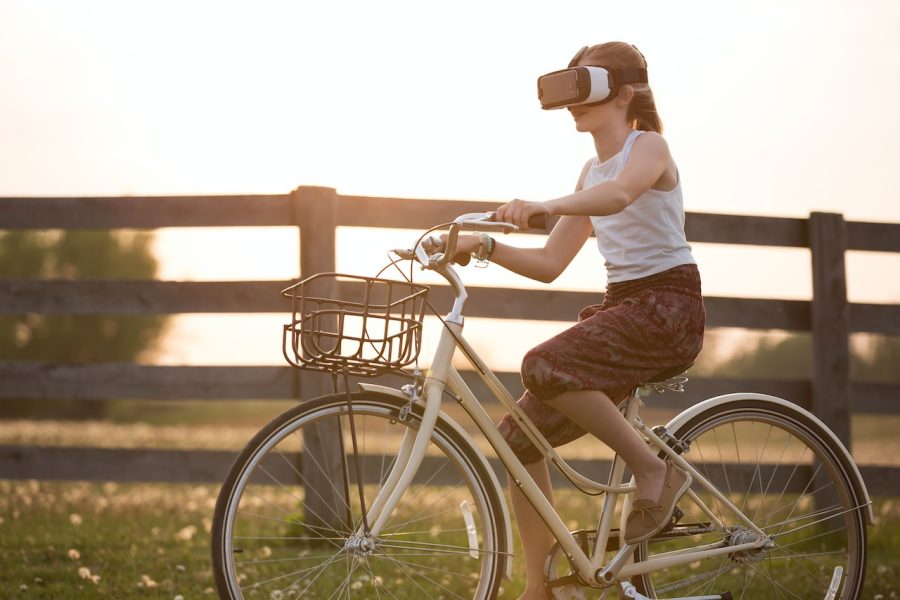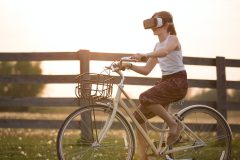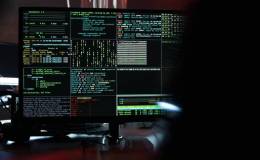Since the early 2000s, when it burst into the entertainment industry, augmented reality has been on the lips of all technology lovers as the “new trend” or the tool of the future that everyone would use, but as the years have passed, it appears that it has lost pace.
If you are unfamiliar with augmented reality, we will briefly define it, explain how it works, and then show why it may be the greatest option for industrial and technological initiatives in 2024.
What exactly is augmented reality?
Augmented reality (AR) is a technology that superimposes digital content like photographs, videos, or animations on top of real-world environments. Create an interactive and immersive experience in which virtual things blend perfectly with the actual environment when viewed through a device such as a smartphone or an augmented reality headset.
AR improves the user’s perspective of reality by providing a new and exciting method to interact with their surroundings. It can be used for entertainment, education, and training, among other things. AR may be used to create highly realistic and immersive experiences that anybody with a smart device and an internet connection can access using sensors, cameras, and other technologies.
Augmented reality’s presence in the technology market
According to Statista, a study on the arrival of augmented reality in mobile versions worldwide was conducted, resulting in “in 2021, it was estimated that the mobile augmented reality (AR) market was worth 12.45 billion dollars.” It is expected to reach around US$17 billion in 2022, rising to more than US$36 billion by 2026. Digital goods, such as augmented reality in-app purchases, as well as ad placement and display software, are all part of the industry.”
In another analysis, they uncovered augmented reality’s increase in the general market, forecasting a value of 20.9 billion dollars by 2027, proving that this technology is still extremely prevalent.
Augmented reality applications in industry
Because augmented reality is so comprehensive and multipurpose, it has any use you can think of, including uses in the industrial sector, inside various enterprises, and trades.
A short glance at the most popular ones reveals the following:
- Repair and maintenance: This technique can superimpose digital information on real-world equipment, such as schematics and maintenance instructions. This assists technicians in identifying issues and performing repairs more effectively.
- Training and onboarding: While you might not believe it, augmented reality can help with training by providing engaging and immersive experiences for new employees. Before working with physical equipment, they can learn and perform activities in a virtual environment.
- Remote Assistance: Field service professionals can utilize augmented reality glasses or augmented reality apps on mobile devices to receive real-time help from specialists in other locations. This aids in the more efficient resolution of complex problems.
- Quality control is one of the most crucial tasks for any business, and it is one where this technology can help. AR can help with quality control processes by superimposing digital models or specifications on physical goods, making it easier for inspectors to see flaws or departures from norms.
- Warehouse and logistics: Using smart glasses or mobile devices, you may optimize warehouse operations by providing workers with real-time information on inventory locations, order-picking instructions, and navigation guidance.
- Engineers and designers can use augmented reality (AR) to perceive and modify 3D models of products, making it easier to collaborate, iterate, and test designs before manufacturing actual prototypes.
- Safety training: Because it is a technology that, in some ways, mirrors reality, it can be used to replicate dangerous scenarios and instruct workers in safe procedures. It helps children to practice emergency reactions without putting themselves in danger.
- Asset Tracking: By overlaying essential data in the user’s field of view, it can assist in tracking the location and status of industrial equipment and assets.
- Assembly and manufacturing: AR-guided assembly procedures can enhance accuracy and reduce errors by offering assembly line employees step-by-step instructions and visual cues.
- Data visualization: It may not be your first thought, but AR can display real-time data analysis and critical performance indicators on the factory floor, allowing for better decision-making and tracking of production processes.
- Maintenance of Machines: Allows maintenance crews to monitor machine health by superimposing equipment health data, maintenance schedules, and alarms on their devices.
- Supply chain management: By offering a real-time view into shipments, inventory levels, and order processing, AR can assist in optimizing the supply chain.
Can augmented reality aid in sales growth?
Every business, whether it sells actual goods or services, wants to make money, sell, complete agreements, and participate in successful negotiations. Augmented reality can help with all of this.
Augmented reality is clearly a technological tool used to persuade the viewer, from showcasing all a product can accomplish in real time to a tour of a paradisiacal countryside advertising a travel agency.
The visualization of products in 3D stands out as particularly useful in allowing customers to see the entire object before purchasing it. This is especially useful when selling things like furniture, jewelry, apparel, or electronics, which clients prefer to observe from several perspectives before selecting. 3D visualization boosts customer trust and can lower return rates.
Customers can also virtually try out things before purchasing them via augmented reality. For example, customers in the fashion industry can use AR apps to examine how clothing or accessories fit before buying, boosting purchasing confidence and reducing returns.
Aside from the focus on products or services, there are other advantages to improving sales, such as having real-time information. AR tags can provide real-time product information such as product reviews, pricing comparisons, and extra features. This assists clients in making informed judgments and has the potential to impact their purchasing decisions.
Customers might be offered interactive experiences in physical stores or online. AR can be used to create interesting and engaging games or shopping experiences, for example, to engage customers and increase purchases.
Additionally, specific augmented reality capabilities can tailor the shopping experience by showing specific products and offers depending on the customer’s tastes and purchasing history. This raises the likelihood of cross-selling and up-selling.
E-commerce with Augmented Reality
Mobile apps and websites in e-commerce can incorporate AR to allow buyers to examine products in their real environment by using the camera on their mobile devices. This allows clients to see how things will look in their home before purchase.
AR-enhanced advertising campaigns can be more engaging and effective, leading to increased brand awareness and sales conversions. AR can also be used to provide more efficient customer service. Companies, for example, can provide technical support via AR glasses to handle customer problems remotely.
This technology aims to improve the customer experience, increase purchasing confidence, and offer useful information, all of which can lead to greater sales for businesses across a wide range of industries. However, in order to fully capitalize on its potential for generating sales, it must be implemented in an efficient and customer-focused manner.
How does augmented reality work?
Augmented Reality (AR) creates an enhanced and frequently interactive experience by merging real-world aspects with computer-generated virtual features. Here’s a more in-depth explanation of how it works:
- Detecting the user’s environment is the initial step in the AR process. This is accomplished by using sensors and cameras that gather real-world data. Video cameras, depth sensors, gyroscopes, and accelerometers are examples of sensors.
- Data processing: After capturing information about the environment, the data is delivered to a processing system, which interprets the information and builds a real-time digital environment model. Identifying real-world objects, surfaces, and characteristics is part of this.
- Track and trace: Track and trace is used to overlay virtual components in the real world properly. This entails tracking the user’s or device’s position and orientation in reference to the sensed surroundings. This is accomplished through the use of visual indicators, motion sensors, and tracking technology.
- Once the world has been analyzed and tracked, virtual features are layered in real-time. Images, movies, 3D graphics, data, or any other digital material you want to present the viewer are examples of these elements.
- Interaction: AR frequently allows users to interact with virtual items. Tapping the screen on mobile devices, utilizing hand gestures, voice instructions, or even specific input devices such as augmented reality glasses or motion controllers are examples of this.
- The resulting scene, which blends real-world and virtual elements, is displayed to the viewer via a device such as a smartphone, tablet, augmented reality glasses, or even an AR headset. For an engaging experience, the display must be consistent with the user’s location and orientation.
- Interaction in real time: AR is interactive and real-time. Virtual objects can react to user actions and adapt to an ever-changing environment.
Conclusion
In a nutshell, Augmented Reality blends real-world data with digital elements to create an experience that enhances user perception. The ability of the technology to interpret and map the natural environment and then overlay virtual information precisely and coherently in real-time, is critical to its successful operation. This technology is employed in a wide range of applications, including gaming and entertainment, as well as industrial, educational, and corporate applications.
Featured Image Credit: Sebastian Voortma; Pexels; Thank you!

















